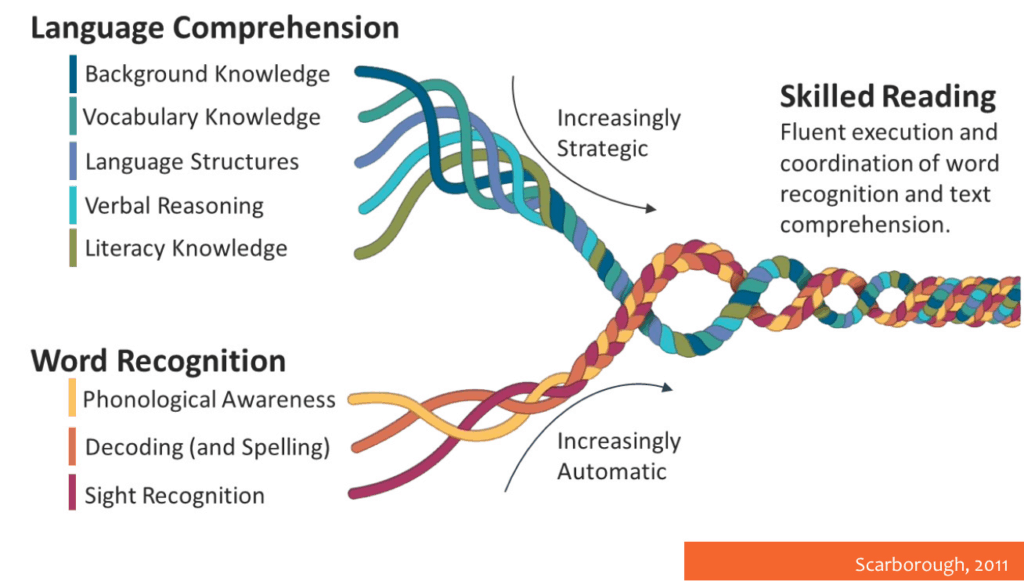FOUNDATIONAL READING
How can we focus on foundational reading skills to accelerate learning?
WHY
- Reading substantially impacts every aspect of our lives, and for our students, every aspect of their academic achievement. The data point to a relationship between the command of foundational skills and success in all other aspects of learning and life.
- Interrupted schooling has particularly dire and lasting consequences for young children because reading is such an important foundational skill.
- If we cannot effectively support unfinished learning in foundational skills for young students, we will see a lasting impact on student achievement and quality of life.


KEY TAKEAWAYS
- Foundational reading skills require special attention. Supporting unfinished learning in foundational reading skills is quite different from supporting unfinished learning in math and science. Acceleration in reading requires clarity about the systematic progression of learning; precise diagnostics about whether students are behind, as well as where they are in progression of learning; and small-group structures that target the particular next step each child needs.
- Strong core materials and planning are key. Just like with math and science, supporting unfinished learning in reading foundations requires strong core curriculum and intensive planning support for teachers for each unit of study.
CURATED TIPS
We offer the following curated tips based on recommendations from Student Achievement Partners, Instruction Partners, and TNTP.
Curated Tips for Teachers: Curriculum and Instruction
- Consider implementing an early reading accelerator, such as this one.
- Scope and sequence matter. Early reading skills are meant to be taught sequentially.
- In reading, it’s okay to go back and remediate. If students missed parts of reading foundations, it is appropriate to go back and teach the skills (including print concepts, phonological awareness, phonics, and fluency) beginning where they left off.
- Ensure daily, systematic phonics instruction. Ensure at least 45 minutes a day of foundational skills work through direct instruction and related practice opportunities, and additional support for students who need more.

- Ensure daily, systematic phonics instruction. Ensure at least 45 minutes a day of foundational skills work through direct instruction and related practice opportunities, and additional support for students who need more.
- Support decoding and fluency development. Support students’ decoding and fluency development through additional small-group or individual support; through opportunities to amplify or embed practice with needed skills within existing instruction or practice opportunities; and through modified student practice or scaffolds.
- Make language connections. Make connections between English and your students’ home language(s) so that you can leverage each child’s existing knowledge and skills. Here are additional tips to address the needs of English Language Learners and students with disabilities. You can find additional strategies here for students with reading disabilities.
- Keep the text at the center of your planning. Plan standards-aligned questions, tasks, and activities that help students unpack the ideas of the text while drawing on their own funds of knowledge and many skills, strategies, and modes of co-constructing meaning. Here’s a resource: Placing Text at the Center of a Standards-Aligned ELA Classroom.
Curated Tips for Teachers: Choosing Materials
- Make instruction equitable and culturally relevant. Ensure that the texts and topics you use reflect and positively affirm the lives, languages, perspectives, and histories of all students, including historically marginalized populations.
- Use positively affirmed texts to ensure students see themselves and their experiences in text.
- You can audit your classroom library.
- Ensure that texts and topics represent many diverse perspectives and identities and curriculum is culturally relevant. Consider these additional ways to bring more equity to literacy instruction.
- Choose texts and topics where students can use and leverage knowledge from their lives and experiences. In dual-language programs, this can also be done through use of paired texts, where knowledge is built in both languages of instruction. Consider Empowering English Learners’ Creating a Language-Rich Text Set and English Learner Success Forum’s Do Leveled Readers Hurt or Help My ELs? resource.
VIDEO RESOURCE
“Addressing Unfinished Learning in Reading: Foundational Skills”, a 40-minute video developed by Instruction Partners. (Download presentation slides.)
- Use complex books for read-aloud. Select books for read-aloud that are far more complex than students can read on their own (1–3 years above what most students can read independently). For guidance in choosing books, consider the following:
- What Makes this Text Complex? K-2 Text Analysis Template
- Lesson Planning Quick Sheet
- Read Aloud Lessons for K–2
- Offer choice and variety. Use choice-based, topical book baskets for independent reading and use small-group time to secure foundational skills or grow knowledge and vocabulary with topically connected, on-level text sets. For more, consult the following:
Curated Tips: Assessment
- Plan for brief screeners. Administer a brief screener at the beginning of the year and at periodic checkpoints throughout the school year. Prioritize letter inventory, phonological awareness, and grade-level appropriate sound and spelling patterns for each student. (Other considerations in the Assessment and Data section still apply.)
- Connect formative assessments to daily lessons. Ensure frequent formative assessments can be folded into daily lessons (e.g., checklists, sampling dictation responses, monitoring of student work). These should be used to adjust instruction and focus on:
- Students’ phonological awareness, connecting to phonics as appropriate.
- Students’ ability to decode and encode new words based on grade-level-appropriate phonics instruction.
ADDITIONAL RESOURCES
- Dos and don’ts by grade-level from Instruction Partners.
- Specific strategies for grades and subjects in CCEE’s Field Guide.
- Unique considerations that buck the trend for early foundational reading (k-2) from Instruction Partners.
- Additional reading acceleration tools and tips from Student Achievement Partners.




